Last Updated on December 9, 2023
If you’re a casual coffee drinker, you may be passingly familiar with the idea of different roast levels. You’ll see coffee advertised as light roast, medium roast and dark roast.
Most coffee drinkers drink either medium or dark roast. And you may have picked a roast to drink, but may not fully understand the difference between dark roast vs. medium roast.
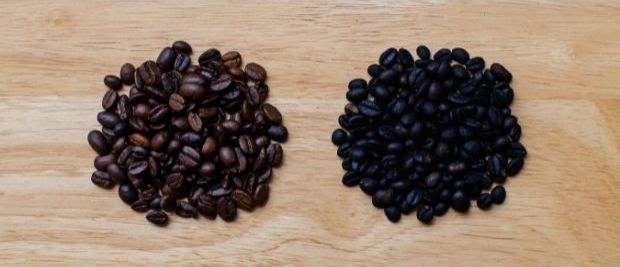
The most basic difference between the two is that a dark roast is roasted longer than a medium roast. The extra roasting time causes the resulting coffee to have a bolder taste with less acidity. However, that additional roasting also removes much of the individual flavour and character of the coffee beans in question.
With a medium roast, you’ll be more able to taste the distinct characteristics of whatever type of coffee bean was used to make your coffee. With dark roast, the roasting process standardizes much of the flavour.
How coffee beans are roasted
Roasting coffee beans gives them the complex flavours we enjoy once they’ve been brewed into coffee.
Coffee beans are usually roasted on a large scale commercially. However, an increasing amount of coffee is roasted in small batches by boutique or specialty coffee producers. You might be surprised how easy it is to roast coffee at home.
For professionals, there are two main types of coffee roasters: drum roasters and hot-air roasters. Drum roasters work by tumbling coffee beans within a drum while heating them. Hot air roasters blow hot air up through a screen or grate into the coffee beans, causing the beans to circulate and swirl within the current of the air.
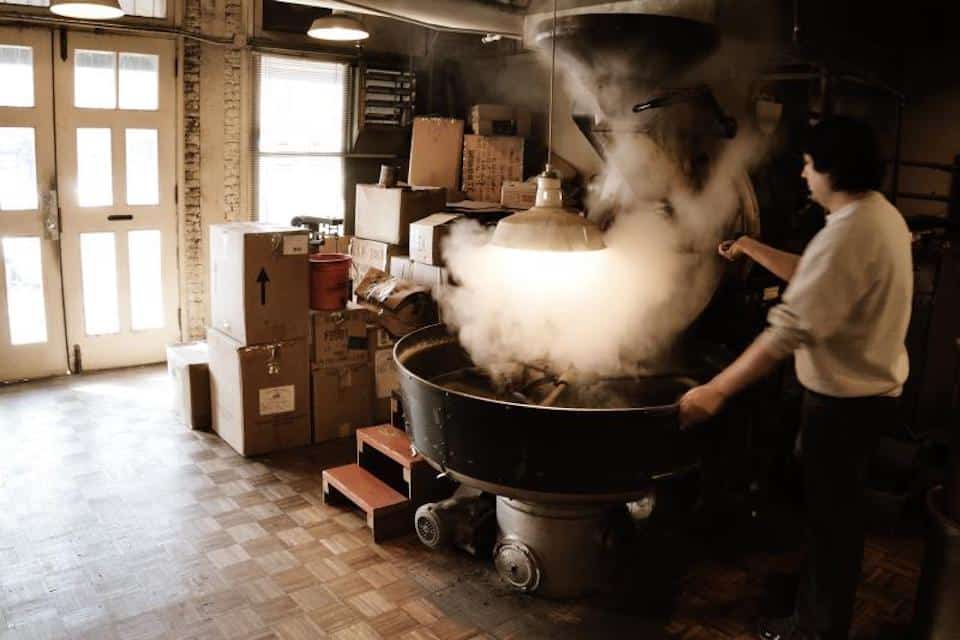
Regardless of the type of roasting equipment, the raw coffee beans are roasted until they reach the desired level of doneness. Then they’re cooled and ground before being brewed. Coffee beans are often ground by the same commercial entity doing the roasting, though they are often sold as whole beans as well.
The stages of a coffee roast
The first stage of coffee roasting begins as beans just start to heat up. They’ll turn pale in colour, sometimes even white. At this stage, the beans are absorbing heat, but no significant chemical or physical changes have taken place.
During the second stage of roasting, the beans begin to shift in colour from a yellow to an orange or tan color. Now, we begin to observe chemical changes, as the coffee bean experiences both the Maillard reaction and caramelization. The aroma of the roast deepens from a grassy smell to something sweeter and more savoury.
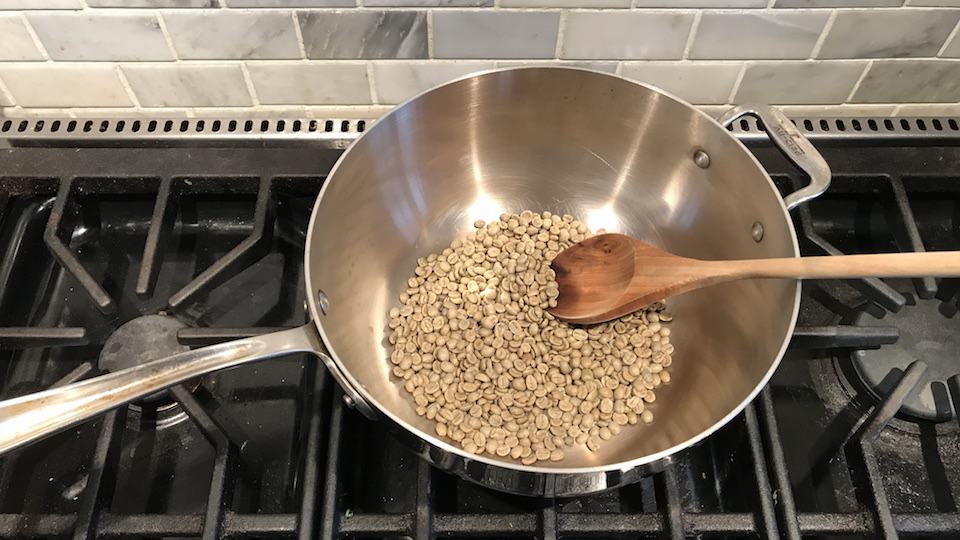
The next stage of roasting is the first crack. At this point, the beans will audibly split with a cracking sound. The body of the beans will also begin to puff up. If you remove the beans from heat right at first crack, this is referred to as light roast.
The next stage of roasting covers the period in time between first crack and second crack. During this period, the flavour of the coffee changes considerably over a relatively short period of time. Even 15 seconds longer will change the coffee’s taste. Removing the beans from heat between first and second crack gives you medium roast coffee.
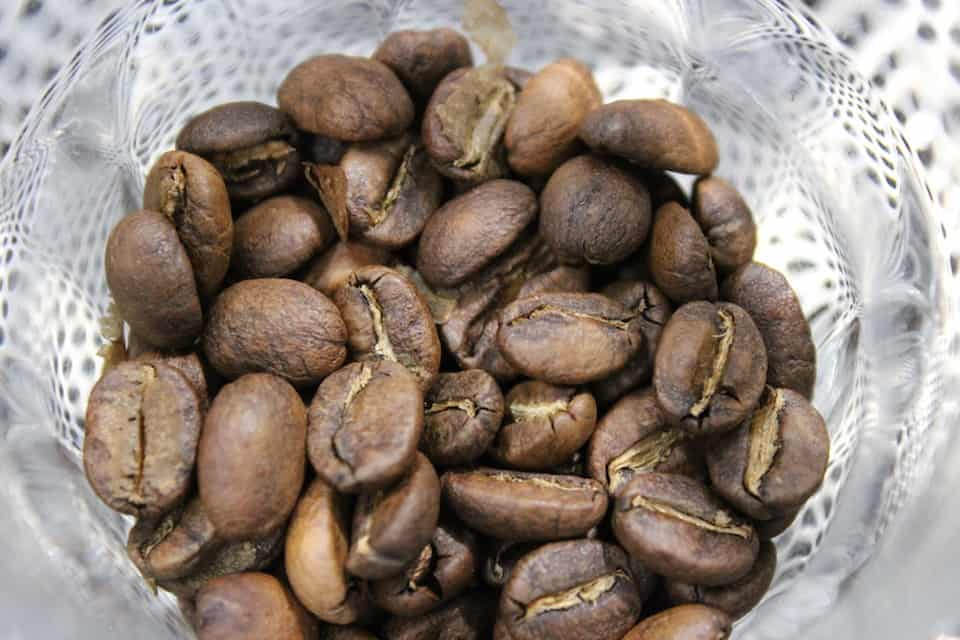
The next stage in roasting is second crack. Here, the coffee again pops or cracks, and oils have begun to migrate from the interior of the beans to the surface. Coffee removed from heat after second crack is dark-roast coffee.
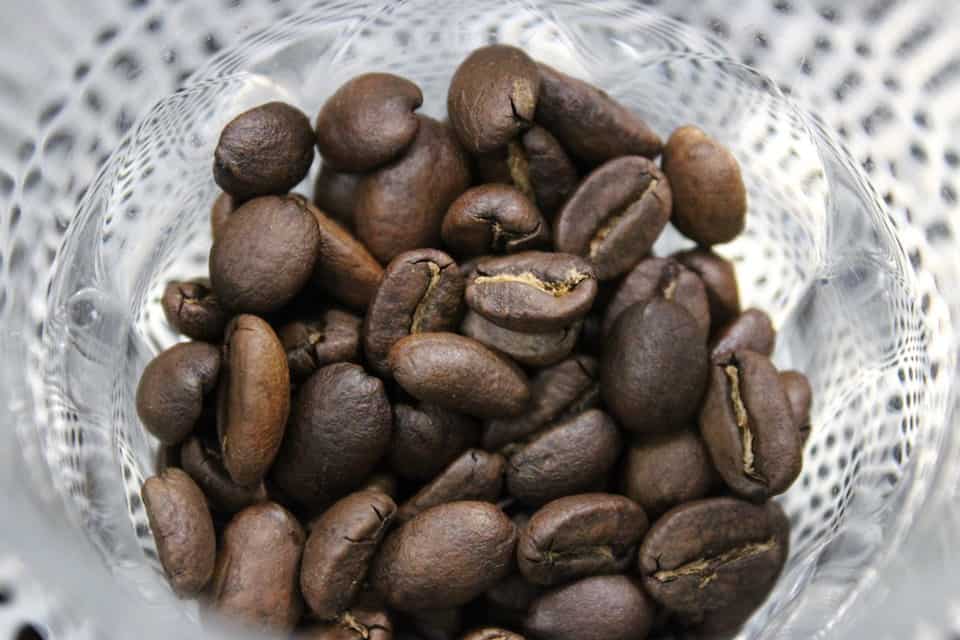
Physical and chemical changes of coffee beans during roasting
As it roasts, coffee undergoes a series of physical and chemical changes. These changes greatly impact the flavour of the resulting coffee, and are also reflected in the appearance of the beans.
Probably the most fundamental chemical change in coffee beans as they roast is the Maillard reaction. The Maillard reaction is a process by which amino acids and reducing sugars create a distinctive range of tastes and flavours. All roasted coffee experiences the Maillard reaction. Caramelization is another chemical change during the roasting process, resulting in a sweet and nutty flavor.
In addition to chemical changes, the coffee beans undergo physical changes. After first crack, a process called pyrolysis occurs, which releases carbon dioxide from the bean and reduces its weight by 13 to 18%.
After second crack, oil from the interior of the coffee bean makes its way to the surface. That oiliness could be visible both on the bean and in the resulting coffee.
Taste of dark roast coffee vs. medium roast
A raw coffee bean is extremely acidic, and doesn’t even hint at the traditional coffee taste that most coffee drinkers enjoy. During roasting, the acidity is lessened and more flavours are promoted from the bean.
A medium roast retains some of the bean’s acidity, as well as some of the distinctive flavour of whatever strain of coffee bean was used. For this reason, those who buy expensive or highly-regarded single-origin coffee beans prefer a medium or even light roast.
A dark roast has very little acidity and a much bolder taste. The dark roast flavour tends to be deeper and darker. Traditionally, dark roast was used to mask the taste of substandard coffee beans, but now many coffee drinkers prefer the standardized, heavily roasted flavour to lighter roasts. It mixes especially well with milk or cream, making it a popular bean for espresso drinks. Try it with your next flat white or cappuccino.
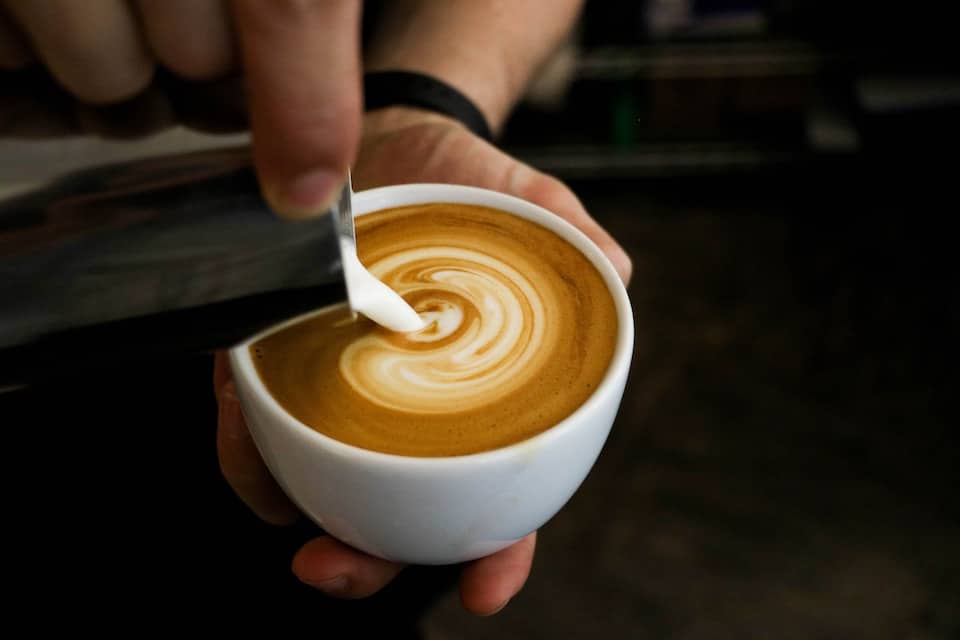
Which has more caffeine: dark or medium roast?
A number of myths exist about how roast level relates to caffeine content. Some people swear that dark roast has the most caffeine, while others say the opposite.
The truth, as shown by Croatian researchers in 2011, is that caffeine content decreases the more you roast. However, the difference is negligible as you move from medium roast to dark roast. For all intents and purposes, medium and dark roast have comparable levels of caffeine. Neither will give you more caffeine jitters than the other.
Why are dark roast coffee beans sometimes shiny?
Raw coffee beans contain oils inside the bean. At lower roast levels, those oils remain locked inside. By the second crack stage of the roasting process, the interior of the coffee bean has begun to break down.
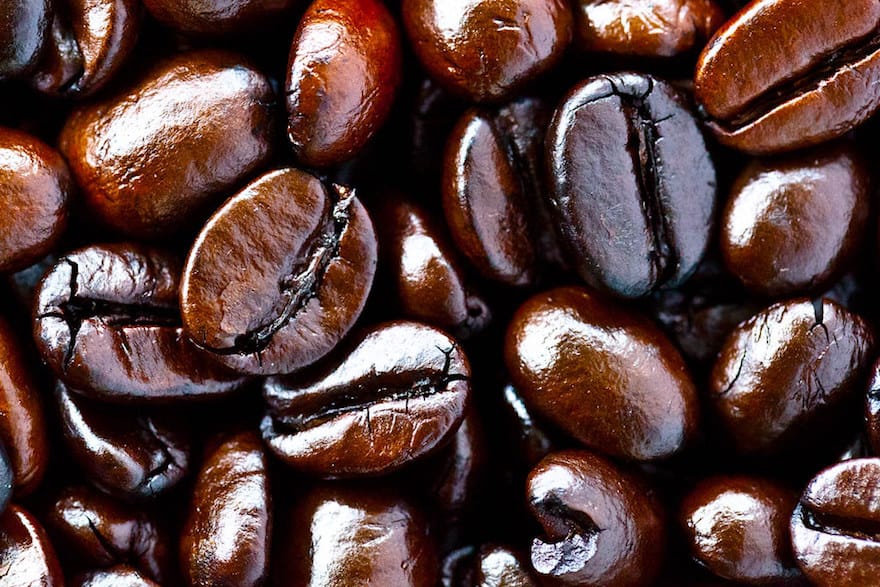
Now, those oils make their way toward the surface of the bean. If you take a look at unground dark roast, the beans often have an oily sheen to them. Oily coffee beans are perfectly natural in a dark roast. This oiliness will persist through the brewing stage to the cup of coffee.
Choose the one that suits your taste
The choice of dark roast vs. medium roast comes down to your expectations for the flavor of your coffee. If you prefer a more acidic, more subtle coffee that retains the character of the coffee beans, you’re better off going with medium roast.
If you prefer a less acidic, bolder coffee with the deep, rich taste often associated with traditional coffee, dark roast is your best option.
In the end, there’s no difference other than taste. You won’t get significantly more caffeine from one or the other, and there aren’t any health factors to separate the two. It’s even possible to appreciate both for certain occasions. Many people enjoy dark roast for their daily coffee while choosing medium roast when they have access to premium coffee beans.

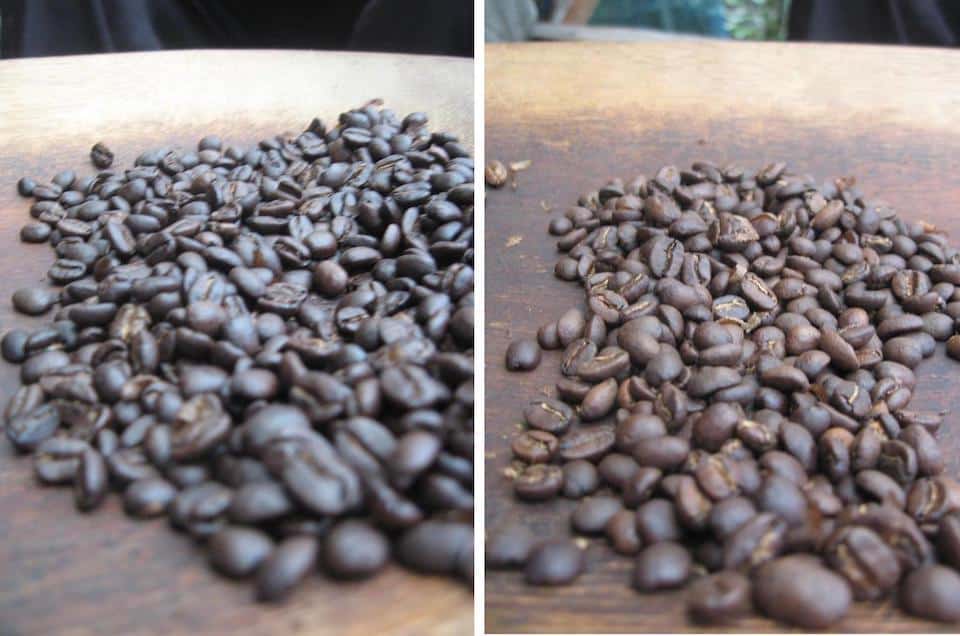

Thanks for the information. Now I know why I like dark roast best — I don’t like an acid taste. And my husband can’t tolerate acidic things, so now I know I’m better off giving him dark roast, which I had thought would be stronger in all ways. Great site!
Good points about the differences between dark roast and medium roast. Another roast to consider is white roast, i.e. most often called “White Coffee”. White coffee is weird. It doesn’t even taste like coffee. If the roaster roasts the bean too light (yellow) then the bean tastes like straw. But if the bean is roasted to a golden color, then the coffee tastes very nutty and wonderfully smooth. It’s very tough to find whole bean white coffee, but you can find it on the internet if you search for “Whole Bean White Coffee”.
Good knowledge. Does it mean White Coffee doesn’t even go through the Milliard Reaction at all and very acidic?